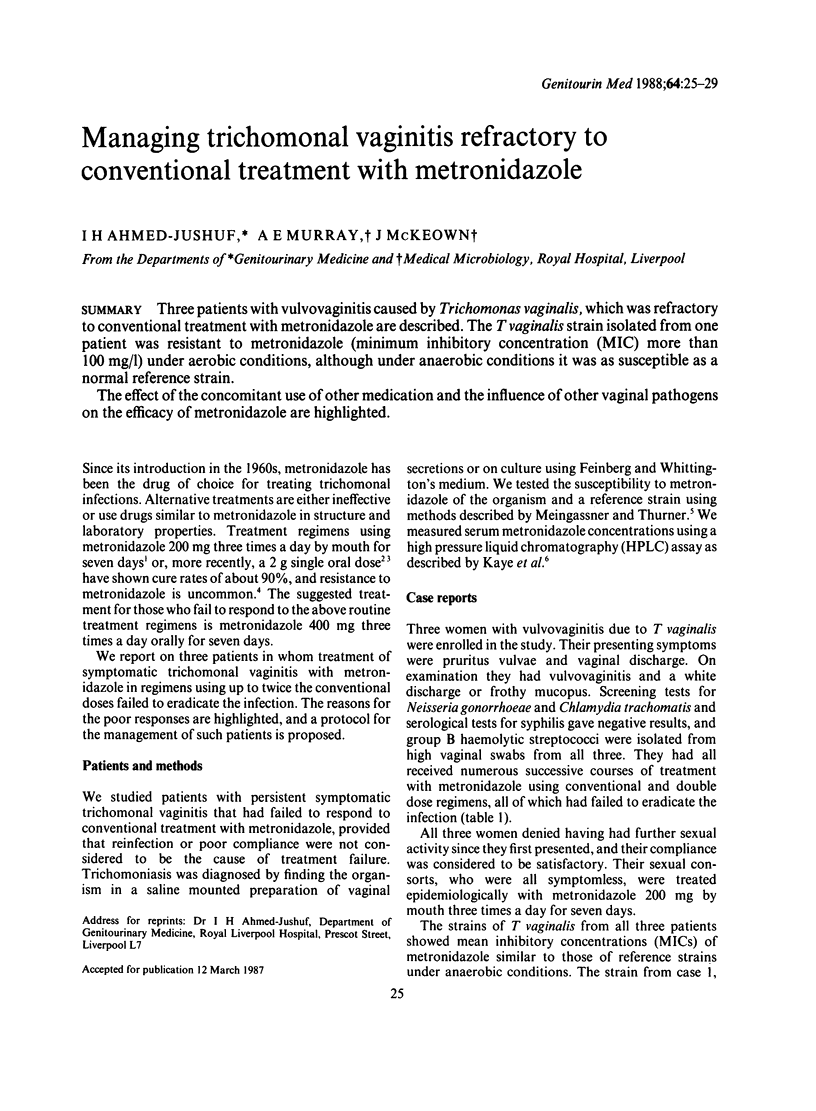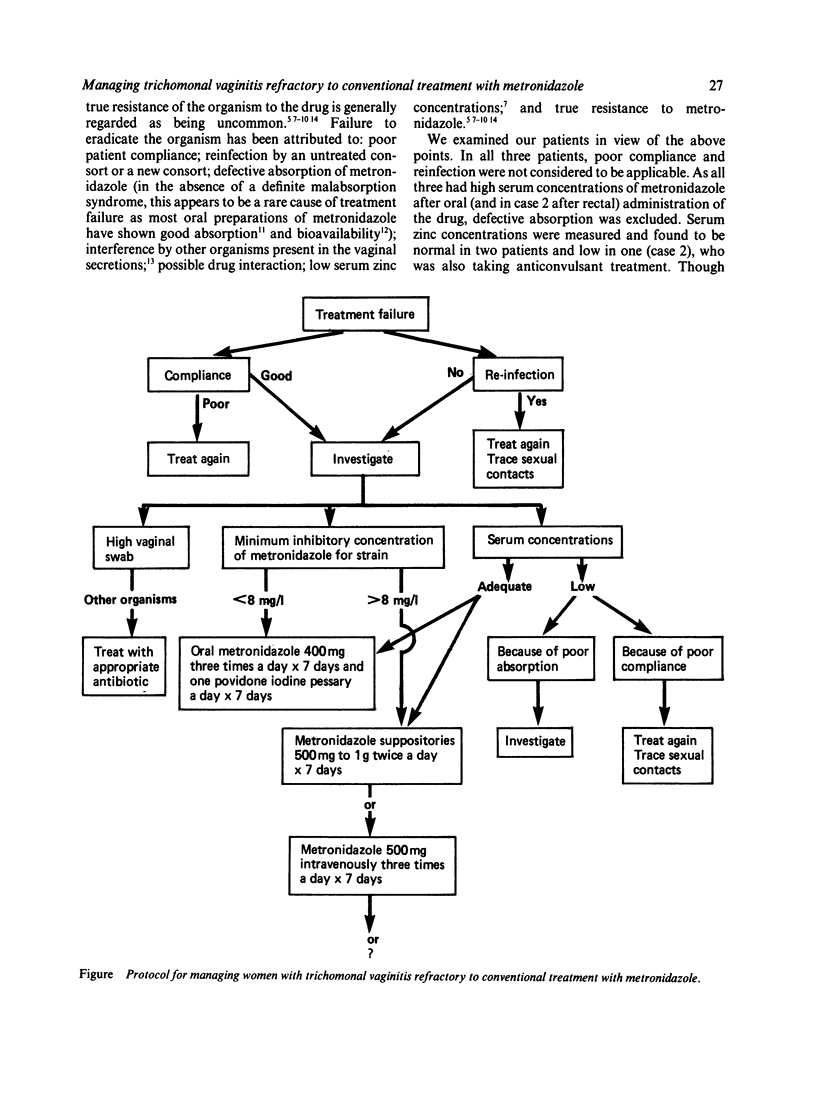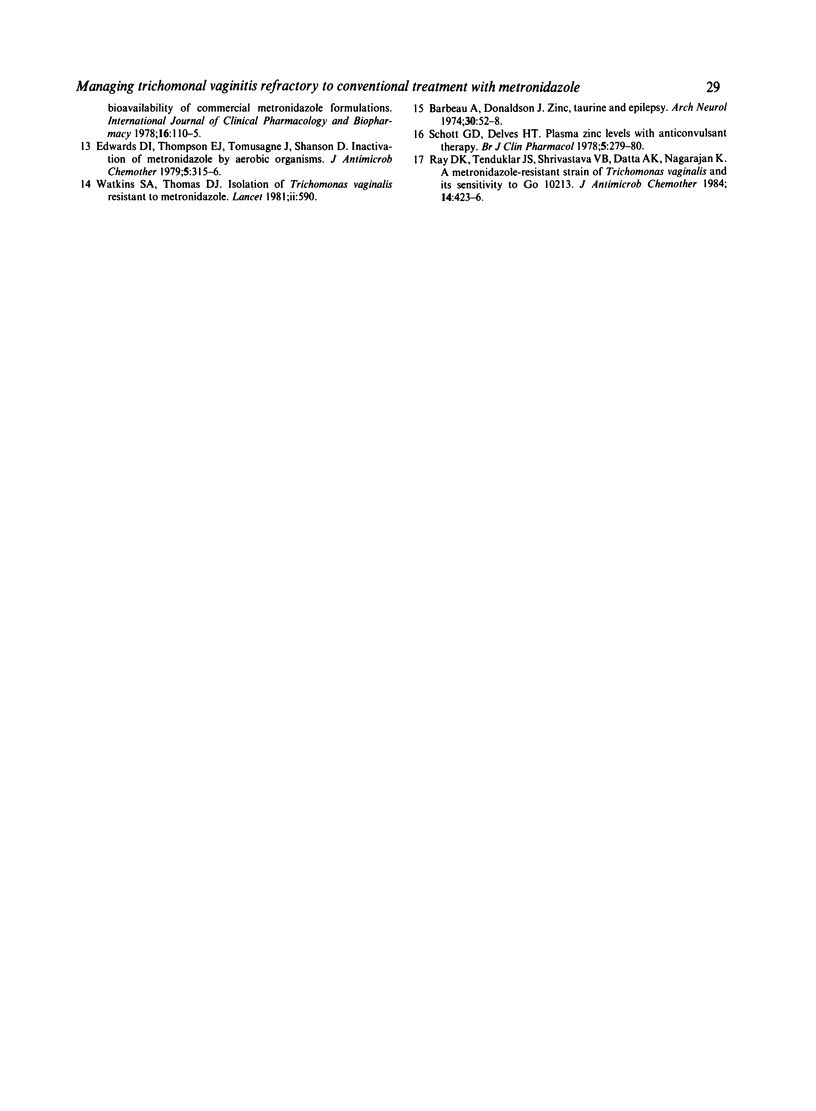Abstract
Three patients with vulvovaginitis caused by Trichomonas vaginalis, which was refractory to conventional treatment with metronidazole are described. The T vaginalis strain isolated from one patient was resistant to metronidazole (minimum inhibitory concentration (MIC) more than 100 mg/l) under aerobic conditions, although under anaerobic conditions it was as susceptible as a normal reference strain. The effect of the concomitant use of other medication and the influence of other vaginal pathogens on the efficacy of metronidazole are highlighted.
Full text
PDF




Selected References
These references are in PubMed. This may not be the complete list of references from this article.
- Amon I., Amon K., Hüller H. Pharmacokinetics and therapeutic efficacy of metronidazole at different dosages. Int J Clin Pharmacol Biopharm. 1978 Aug;16(8):384–386. [PubMed] [Google Scholar]
- Dykers J. R. Single-dose metronidazole for trichomonal vaginitis. Patient and consort. N Engl J Med. 1975 Jul 3;293(1):23–24. doi: 10.1056/NEJM197507032930106. [DOI] [PubMed] [Google Scholar]
- Edwards D. I., Thompson E. J., Tomusange J., Shanson D. Inactivation of metronidazole by aerobic organisms. J Antimicrob Chemother. 1979 May;5(3):315–316. doi: 10.1093/jac/5.3.315. [DOI] [PubMed] [Google Scholar]
- Heyworth R., Simpson D., McNeillage G. J., Robertson D. H., Young H. Isolation of Trichomonas vaginalis resistant to metronidazole. Lancet. 1980 Aug 30;2(8192):476–478. doi: 10.1016/s0140-6736(80)91911-x. [DOI] [PubMed] [Google Scholar]
- Kaye C. M., Sankey M. G., Thomas L. A. A rapid and specific semi-micro method involving high-pressure liquid chromatography for the assay of metronidazole in plasma, saliva, serum, urine and whole blood. Br J Clin Pharmacol. 1980 May;9(5):528–529. doi: 10.1111/j.1365-2125.1980.tb05856.x. [DOI] [PMC free article] [PubMed] [Google Scholar]
- Meingassner J. G., Thurner J. Strain of Trichomonas vaginalis resistant to metronidazole and other 5-nitroimidazoles. Antimicrob Agents Chemother. 1979 Feb;15(2):254–257. doi: 10.1128/aac.15.2.254. [DOI] [PMC free article] [PubMed] [Google Scholar]
- Roe F. J. Metronidazole: review of uses and toxicity. J Antimicrob Chemother. 1977 May;3(3):205–212. doi: 10.1093/jac/3.3.205. [DOI] [PubMed] [Google Scholar]
- Schott G. D., Delves H. T. Plasma zinc levels with anticonvulsant therapy. Br J Clin Pharmacol. 1978 Mar;5(3):279–280. doi: 10.1111/j.1365-2125.1978.tb01643.x. [DOI] [PMC free article] [PubMed] [Google Scholar]
- Thurner J., Meingassner J. G. Isolation of Trichomonas vaginalis resistant to metronidazole. Lancet. 1978 Sep 30;2(8092 Pt 1):738–738. doi: 10.1016/s0140-6736(78)92739-3. [DOI] [PubMed] [Google Scholar]
- Waitkins S. A., Thomas D. J. Isolation of Trichomonas vaginalis resistant to metronidazole. Lancet. 1981 Sep 12;2(8246):590–590. doi: 10.1016/s0140-6736(81)90984-3. [DOI] [PubMed] [Google Scholar]


